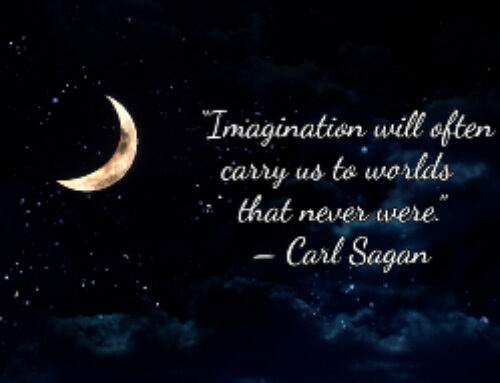Happy Friday, everyone! Today I’m going to be touching on the last few steps of my writing process: edits, revisions, and rewrites. I have two finished manuscripts in one or more of these stages. I call this the polishing stage and there’s a lot to it, but as usual I’m just sticking to my take on it all.
Now, if you know me, you know I hate editing. It’s my own personal hell and it sucks the creative energy right out of me. It’s tedious work and it’s far from fun. I love writing the first draft and letting my creativity flow, but I hate fixing it all. I hate the amount of hours I spend analyzing and scrutinizing the words on the pages. I hate the amount of time it takes me to decide on word choice, or which of my scenes need to be cut or completely rewritten. As much as I hate it, editing is a necessary evil that needs to be done and repeated multiple times.
Sometimes, I wish I was one of those writers who could edit as they write, but I’m not. If I edited my rough draft as I wrote it, I’d never finish the damn thing. I’ve tried it and failed, miserably. It’s why I turn my inner editor off during the drafting process. Now that I’ve gotten that off my chest, let’s jump into what happens next.
Rest and Read
The first thing I do after I’ve completed my rough draft is print it up and tuck it away. As tempting as it is to dive into edits immediately afterwards, I resist the urge. I need to distance myself from my manuscript, that way I’m looking at it with a fresh pair of eyes. It’s much easier to catch mistakes when you’re not constantly rereading the same thing over and over again. I usually let my manuscript rest for about a month or so before touching it again.
Next, I read through the entire draft without red-penning it or highlighting it. This gives me the general feel for the story as a collective whole. I can catch any pacing problems, plot holes, flat scenes, cohesiveness issues, overall flow of the story, and more. When I start on edits first, I’m not seeing the overall problems as clearly. I’m more focused on grammar, sentence structure, info dumps, etc.
Also, by reading through my manuscript first, it gives me an idea if any scenes need to be moved around, deleted, or rewritten. In fact, the first read through gives me a pretty good idea on how big of a rewrite I’m going to have on my hands when it comes to the second draft.
I write down any problems and changes that need to be made to the overall story in a notebook. I keep it on hand for when it comes time for revisions and rewrites.
Edits, Revisions, and Rewrites
After I’ve read it through once, I give my manuscript a break for a couple of days before picking up those red pens and highlighters. I create an editing key where different colored highlights represent different problems, such as grammar, repetitiveness, lack of clarity, and so on. This process is time-consuming and tedious. By the time I’m through with the first draft, it often looks like a unicorn took a shit all over the pages. But, that’s what happens when you word-vomit your first draft.
Once I’m done editing, I’m ready to dive into revisions and rewrites. There is a difference between the two. Revisions are often minor and relate more to grammar, structure, and simple changes to improve the story or scene. Rewrites are more complex and relate to the overall story and story structure. The story’s not flowing, it’s not cohesive, there’s multiple plot holes, maybe the subplots don’t make any sense, or maybe your cast just veered off their breadcrumb trail and dove off the proverbial cliff. Shit happens.
The way I differentiate the two are by thinking of a house. With rewrites, the foundation is there, but the interior is a hot mess and needs major fixing. With revisions, I think of it as an interior that just needs some sprucing up and a bit of polishing. It might need some updates and renovations, but overall everything is pretty much working as a whole.
Next, I pull up the digital version of my first draft, along with my outline, and have my colorful manuscript by my side. I then work on fixing and polishing the story to make it the best it can be. This entire process gets repeated multiple times, again and again.
When I’m revising my manuscript, I’m not only looking at it as a writer, but as a storyteller, and a reader. I’m also in my characters’ heads, making sure that I’ve portrayed them all as accurately as possible. All the things I’ve talked about in the past blogs are no longer separate entities. In order for the story to be good and flow, all the pieces have to fit and work together.
My job as a writer is to be able to pull the readers into my fictional world and into the characters’ lives. I want my books to be the ultimate escape from reality. I want to give my readers the best possible reading experience that I can. And I can’t do that alone. It’s why I turn to critique partners, alpha readers, and an editor. They can often spot problems that I can’t. I’m constantly working on these books, so it’s hard for me to catch and fix every mistake. It takes a team and it takes time to produce the final product. I’d rather take breaks, go slow, and produce a polished book than cave into pressure and publish something that’s just mediocre.
What’s Next?
The next blog is going to be all about books and book reviews. Because I was a reader way before I was a writer, I’m going to give you my take on book reviews and why they’re important to readers as consumers. I’ll also be talking more about my journey, my ups and downs, my favorite things, and giving you a breakdown on who’s who in Luna Cove.
As we approach the new year, you can also look forward to some new content on this site. Look for character extras, social media outtakes, and story extras from the TWOLC series. Also, coming up next year, I’ll be adding character blogs along with snippets from their personal interviews – as well as an announcement. Make sure to stay tuned to this site for the latest on all things Luna Cove. In the meantime, you can catch up with me on Twitter, Instagram, or Pinterest.
I would like to wish all my U.S. friends a Happy Thanksgiving. Thank you for sticking with me, supporting me, and following me on this crazy journey. Until next time.
Cheers,
Amelia





Hello! I’ve been reading your web site for a long time now and finally got the courage to go ahead and give you a shout
out from Huffman Texas! Just wanted to mention keep up the
excellent job! Way cool! Some very valid points! I appreciate you writing this article plus the
rest of the website is extremely good. This is a topic that is near
to my heart… Many thanks! Exactly where are your contact details though?
http://nissan.com/
Thank you! I’m glad you’re enjoying the blog and website. Your comments are greatly appreciated. 🙂 To contact me, you can head on over to the contact page, fill out the form, and I’ll get back to you as soon as I can. Enjoy the rest of your weekend. 🙂